Restoring Java’s Big City

Local residents of a town in Java are at risk of losing their heritage, but the real challenge is in making them aware of the value of their loss
by Erwin Maulana and Prapti Widinugraheni
Regret and sorrow were etched on the face of Debashish Nayak, an urban heritage conservation advisor at the Ahmedabad Municipal Council in India, when he saw a joglo—a traditional Javanese house—being taken apart in Kampung Karang Duren village one day last February. He was concerned this would change Kotagede and he knew that if such practices continued, the people of Kotagede would soon lose a valuable piece of their heritage.
Similar emotions were felt by Prof. Dr. Ismail bin Omar from Universiti Teknologi Malaysia (UTM). Both were in Kotagede—a town literally meaning ‘big city’—as speakers at the 3rd International Symposium on Asian Heritage Post Disaster Mitigation and the 4th International Field School for Asian Heritage (IFSAH) on February 17-25, 2007.
Amongst the many World Heritage sites and cultural properties in and around Yogyakarta, Kotagede has been one of the most neglected and difficult to manage। This was a concern to members of the Centre for Heritage Conservation at Gadjah Mada University (UGM) and the Jogja Heritage Society, who then decided to provide the IFSAH secretariat with information in the hope the IFSAH program could be structured around the theme of finding solutions to the complex issues pertaining Kotagede’s heritage properties and their restoration.
Coincidentally, the 4th IFSAH was preceded by the unfortunate event of the May 2006 earthquake, so the international symposium was also dedicated to discussing post-disaster mitigation of heritage entities. Apart from learning from the experiences of other countries and discussing urban planning/design strategies on this issue, the symposium sought strategies to formulate a post-earthquake master conservation plan for Kotagede Heritage District.
Mr. Nayak said establishing an understanding within the community was important in the conservation of locallyowned heritage; this should be carried out continually. He said Kotagede’s development could be geared towards the local community for economic, social and tourism purposes. Without conservation, the face of Kotagede as an ‘old city’—the centre of the old Islamic Mataram Kingdom—would change and become like any other city.
Located 10 kilometres southeast of Yogyakarta City, within Yogyakarta province, Kotagede is home to various jewellers and is renowned for its silversmith industry. The town was once the capital of the Islamic Kingdom of Mataram, which was founded in the 16th century by Panembahan Senopati. The town embodies the older Hindu-Buddhist tradition and Islam, which arrived more recently; this can be seen from the legacy of mosques and graveyards in the town and temples in the region.
The townspeople of Kotagede are known to be hard workers. The original inhabitants of Kotagede were artists, creating woodcraft and silver and gold jewellery. Most of them came from the Hindu Kingdom of Majapahit in East Java and Bali and were commissioned by the Islamic Mataram Kingdom to fulfil its artistic needs. Kotagede’s past glory can still be witnessed today, such as in the houses belonging to the Kalang people. Woodcarvings engraved in the frameworks of buildings owned by the Kalang show touches of past luxury.
In the 1700s, the Kalang community became very rich because of their work as traders and manufacturers of silver handicrafts; the architecture of their luxury houses followed the Javanese Hindu tradition. In the following period—around the 1800s till the 1900s—Javanese joglo houses (uniquely Javanese architecture) appeared; these had Arabian ornaments and a prayer room attached. An important change happened around the 1920s to 1930s, when the Kalang community—monopolised by the Dutch colonial government—handled pawnshops and diamond and opium trade. During this period, the Kalang built luxury houses with Baroque European architecture. Examples of this can be found today in Kemasan Street.
Local houses in Kotagede are arranged in the typical village style known as the kampung alun-alun (town square village). These houses are built close together, pushing one another into the crowded streets, which then become more like paths because roofs and buildings overlap.These villages are inhabited by traditional silversmiths whose creations lend credence to Kotagede’s image as a hub for silver handicraft.
Prof. Omar from UTM saw similarities between the problems faced by Kotagede and several sites in Malaysia. Even before the earthquake there were many issues faced by joglo houses in Kotagede; these included, among others, instances whereby houses were the object of inheritance distributions; or were empty or vacated by their occupants. He said it was a shame when locals solved the problem by selling the joglo to people living outside the area because the houses end up being the ‘lost heritage’ of Kotagede.
He was also unable to see any regulations from the regional government that could help rescue Kotagede’s heritage. To make matters worse, Kotagede is geographically divided between two different regencies, so there is the possibility of differing, if not conflicting policies between the two. Mr. Omar, who is an agrarian, said he also saw that many joglo houses did not have land certificates; in fact, there were those whose data were lost and went unrecorded by the government land agency.
An alternative solution to Kotagede’s various problems has been the formation of a local body—consisting of representatives from the government, community groups, academia and other relevant parties—tasked with creating a guideline on the management of joglo houses and providing these guidelines to local owners. This gives owners an idea of the value of their heritage and assists them with maintenance.
The coordinator of the Organisation for Heritage Management in Kotagede, M. Natsier, said around 20 percent of pendapa (traditional gazebos) or joglo in Kotagede had recently been sold off by their original owners. This was because joglo or pendapa owners lacked funds to repair the residences which were seriously damaged in last year’s earthquake. Ironically, the government has not carried out the concrete steps needed to save the cultural asset—and it has been up to foreign organisations and overseas assistance to come to the rescue. Mr.Natsier said he recorded more than 20 heritage-listed joglo as having been sold by their owner to outsiders.
Mr. Natsier said the number of joglo houses in Kotagede was recorded at around 170 in 1985 and 150 in 2005. During the earthquake, 25 joglo collapsed while others were heavily damaged; these required immediate restoration so as not to allow ownership to change hands or physical locations altered. Ironically, the market price of a joglo is much lower than its historical value. “Rather than spend hundreds of millions of rupiah on restoration, owners prefer to sell a pendapa for several million rupiah,” said Mr. Natsier. Most of the time, owners sell the joglo for inheritance money.
Yukio Nishimura, a professor of urban engineering from the University of Tokyo, said the redevelopment of Kotagede should have a positive impact on the town’s local community. Planning of the region could be adapted to the requirements and needs of tourism, for example, but it should continue to firmly take into account the micro layout of the region, so changes to buildings or land functions that violate building regulations and feasibility studies do not occur.
The task is not one that can be accomplished overnight, Program Coordinator of the Jogja Heritage Society, Dr. Laretna T. Adhisakti, estimated the time needed to accomplish this feat at more than 20 years.
© Copyright 2007 FuturArc. All rights reserved. Reproduction in whole or in part without permission is prohibited.


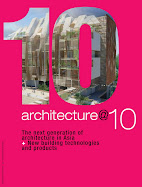
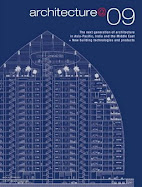




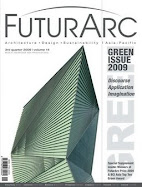



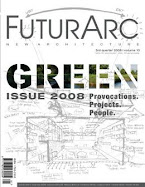








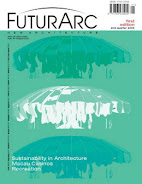
No comments:
Post a Comment